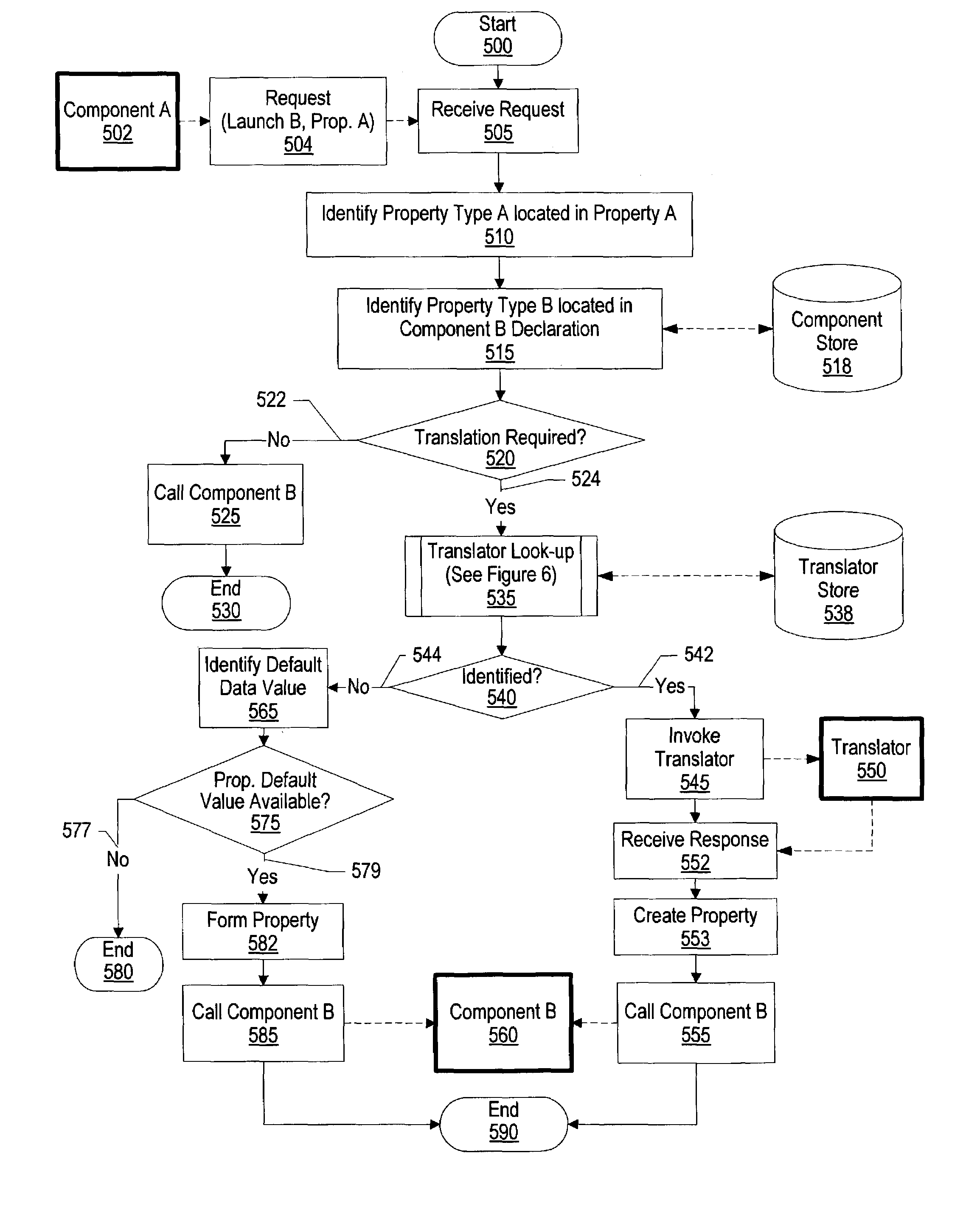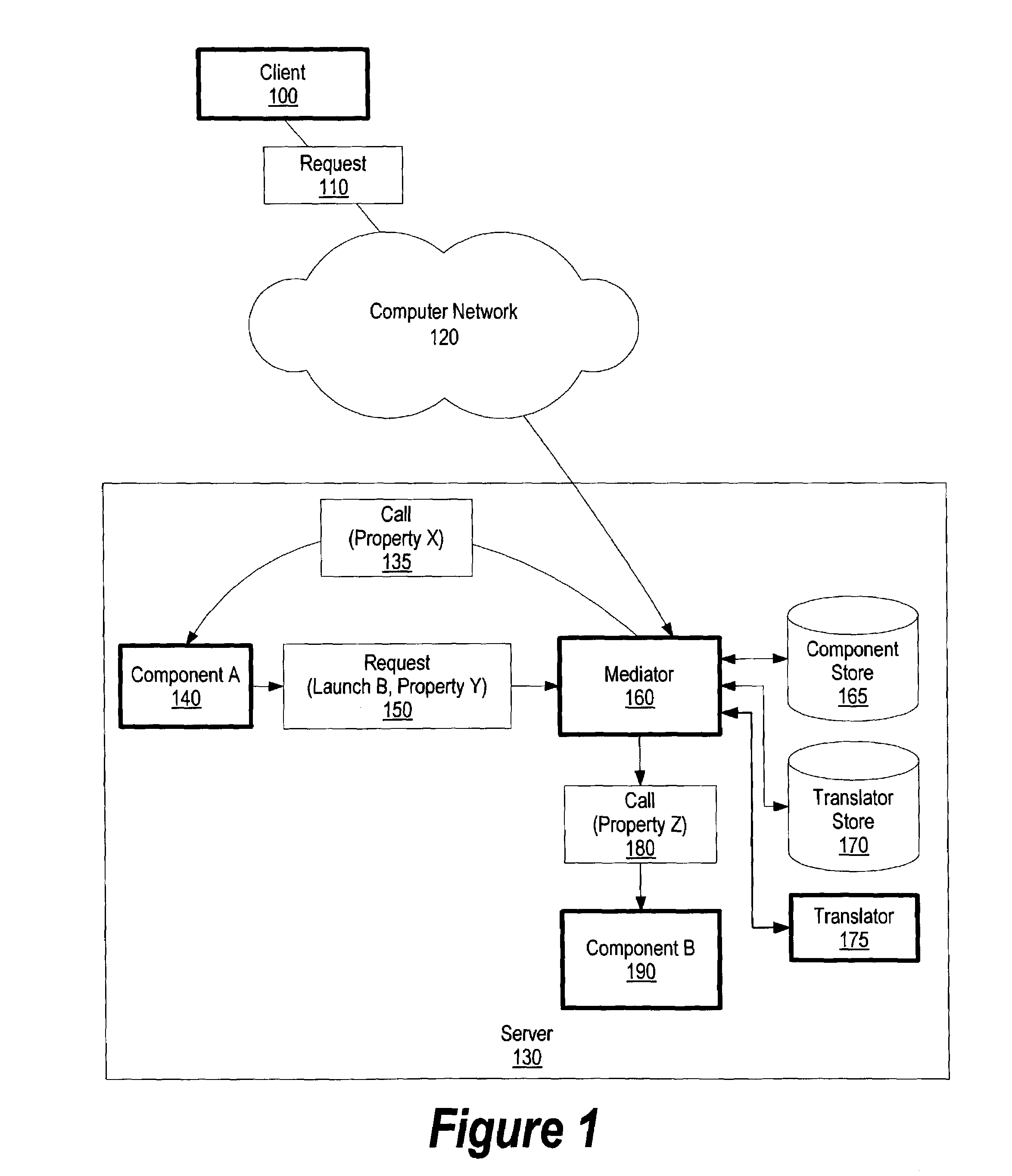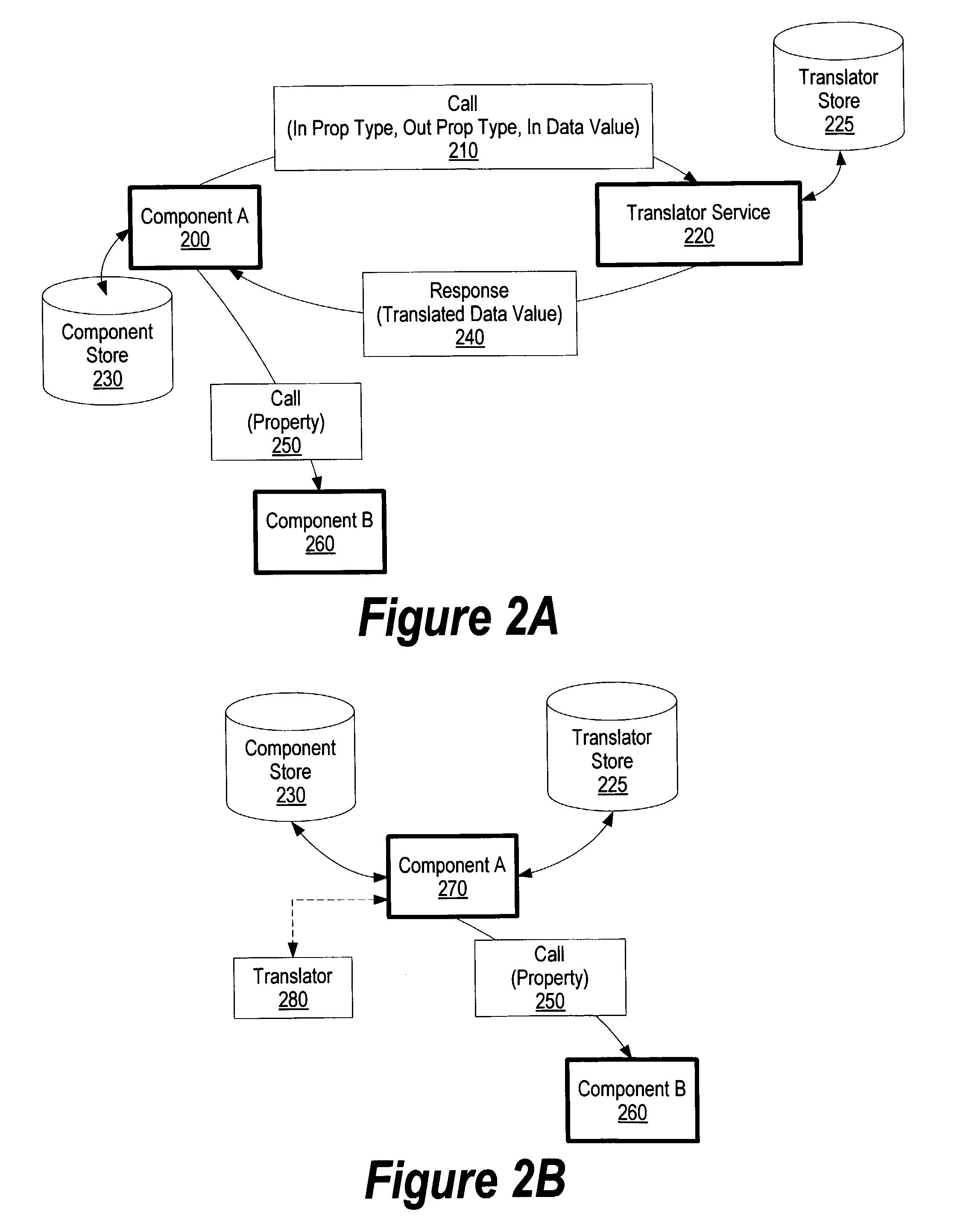System and method for selecting a translator to translate a component request using semantic typing
a component request and semantic typing technology, applied in the field of system and method for programmatic selection of a translator to translate intercomponent data, can solve the problems data impedance mismatches that are exceedingly difficult to create new solutions based on existing components, and the likelihood of data impedance mismatches grows dramatically, so as to eliminate data impedance mismatches
- Summary
- Abstract
- Description
- Claims
- Application Information
AI Technical Summary
Benefits of technology
Problems solved by technology
Method used
Image
Examples
Embodiment Construction
[0026]The following is intended to provide a detailed description of an example of the invention and should not be taken to be limiting of the invention itself. Rather, any number of variations may fall within the scope of the invention which is defined in the claims following the description.
[0027]FIG. 1 is a diagram showing a server processing a client request. Client 100 sends request 110 to server 130 through computer network 120, such as the Internet. Server 130 receives request 110 and invokes mediator 160 to process the request. Mediator 160 determines that component A 140 should be invoked, and sends call 135 to component A 140 which includes property X. Property X includes various attributes in which component A 140 uses. During the execution of call 135, component A 140 determines that component B 190 should be invoked. Component A 140 (i.e. the requesting component) sends request 150 to mediator 160. Request 150 includes a launch target identifier (e.g. “Launch B”) and a ...
PUM
 Login to View More
Login to View More Abstract
Description
Claims
Application Information
 Login to View More
Login to View More - R&D
- Intellectual Property
- Life Sciences
- Materials
- Tech Scout
- Unparalleled Data Quality
- Higher Quality Content
- 60% Fewer Hallucinations
Browse by: Latest US Patents, China's latest patents, Technical Efficacy Thesaurus, Application Domain, Technology Topic, Popular Technical Reports.
© 2025 PatSnap. All rights reserved.Legal|Privacy policy|Modern Slavery Act Transparency Statement|Sitemap|About US| Contact US: help@patsnap.com



